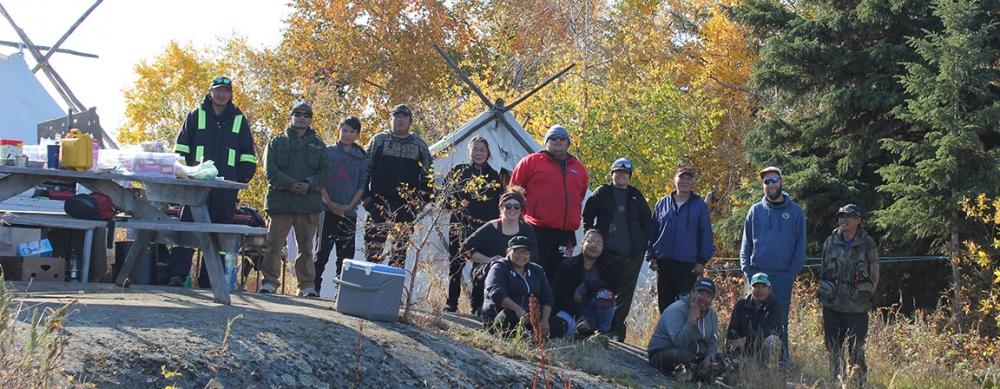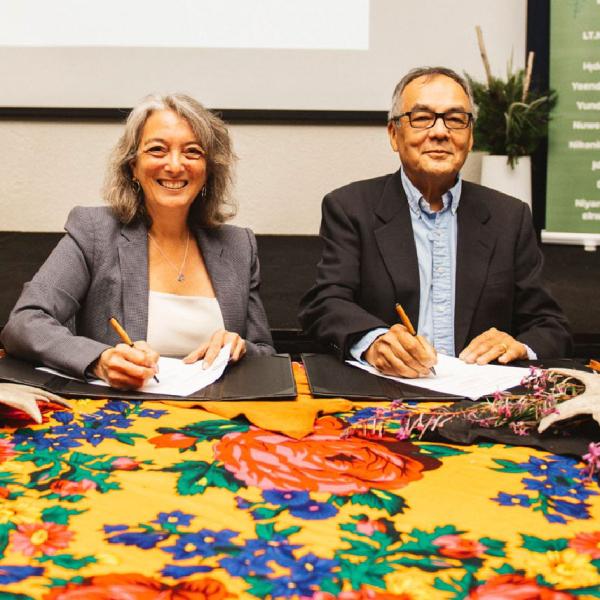The Tłı̨chǫ Government Lands Department and collaborators (Wek’èezhìi Land and Water Board, Wek’èezhìi Renewable Resource Board, Wilfrid Laurier University, DFO, GNWT-ENR and others) just finished another successful year for the Marian Watershed Stewardship Program. During the week of September 9-13, 2019, a group of about 14 participants camped out at an island across from Hàelîî and travelled by boat to nearby sites to collect fish, water and sediment samples. This community-based aquatic effects monitoring program has been ongoing for many years and was designed to collect baseline data at sites that are of importance to community members. The data is used to identify the cumulative impacts of development, climate change, and increased use of the Marian Lake watershed. The people involved in the camp included staff from Tłı̨chǫ Government Lands Department, local knowledge holders, environmental monitors and scientists who will analyze the samples. In order to get adequate data and a good representation of the lake, 20 Lake Whitefish and 20 predatory fish should be obtained, in total 18 whitefish, 18 inconnu and 4 jackfish were achieved in 4 different sites. Water samples were collected from five different sites and sediment samples were collected from three of the sites where water was collected. Typically, water and sediment samples would be collected at the same sites as the fish, there was only one site where all three samples were collected from. If you are interested in hearing about the results from this program, there will be presentation in the spring.
For more information please contact Terrell Knapton-Pain or Stephanie Behrens.






